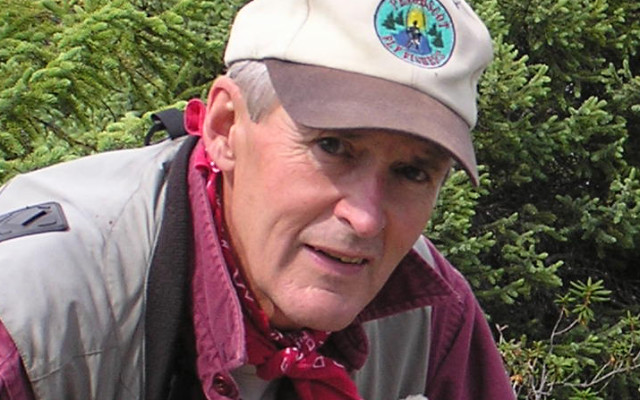
A Poppins moment in a deer blind
By V. Paul Reynolds
There was a time when I climbed up trees in the deer woods, a lot. Tree stands of all shapes and designs with my name attached were scattered hither and yon in two counties. For somebody who has a height thing, I was able to suppress my phobia, pushed hard by my passion for the hunt. Thankfully, in all those years of climbing and sitting and climbing back down in the dark, there was nary a mishap – though once my safety strap did tug me awake during an involuntary doze.
Eventually, advancing age, common sense and wifely rejoinders ended my forays 20 feet above the deer trails. Ground blinds replaced the tree stands. These easy-up camo bubbles are a great way to put you near the deer runs with stealth and scent reduction. You can move about and stretch without detection.
On the coldest days a buddy heater can make a ground blind relatively comfortable. Most of these blinds have small observation and shooting windows that have camo screening: you can see the deer, but the deer can’t see you. Once, in Orrington during a bow hunt, my arrow en route to a deer outside my blind first penetrated the fabric of the blind and then the deer. That deer has long been consumed, but the blind still sports a star-shaped hole as a reminder. Ah, memory dings.
Recently, on a beautiful windless November day, I set up the blind on a knob in the middle of a big mowed field that is known to attract late afternoon deer. No luck that day. On day two I returned to find the blind missing! Soon it was discovered wound around a tree on the edge of the field. Obvious oversight on my part. The blind had not been anchored properly on that windless day.
Putting the blind back in its spot on the nob, I took note of the wind blowing briskly from the northwest. Oh, oh, the guy ropes and anchoring stakes were missing from the blind carry bag! No problem. Stakes were fashioned from some dead sticks and for good measure, my drag rope was tied to a big rock and tied to the ground blind’s windward side. “That should do it,” I said to myself smugly. It’s 2:30 pm. Time to hunker down inside the blind and wait for the magic hour.
Just as I was meditating on the good feeling I had about my setup, a gust of wind began elevating my blind, anchors or no anchors. Man, this was deer central. You don’t just give it up and walk away a half hour before the long shadows signal feed time for the wily whitetails. This was not good. What if I am lining up for an 80-yard shot and the tempestuous wind lifts the blind and blows my cover?
“Innovate, innovate,” my inner voice demands of me. The wind builds. “Do something quick before you become Mary Poppins hovering above the field in your camo-colored parasol parachute.”
“No rope left. How about your belt? Yes, yes, a leather belt can drag a deer, it surely can restrain this levitating ground blind.”
Looping the belt around the support poles inside the top of the blind just in the nick of time, I finally have some control. When the gust hits, I am able to restrain the liftoff by tugging the belt firmly with my left hand.
Next problem, what if a deer enters from stage left during a gust? The question is, of course, would I be able to wait out the deer until the gust subsides, or simply shoot with one arm by laying the barrel on the edge of the blind window?
Probably for the best, the contingency never presented itself. No deer showed. But I was ready. The sun faded over the hills of Newburgh and last shooting light left the field as the wind finally died down.
As anyone who spends any time in the deer woods knows, there is always a lesson, always a learning experience. And it is almost always fun, in spite of the cold, the deerless days, the biting wind, and the endless hours of high anticipation.
Next year, you can be sure, we will do it all over again.
The author is editor of the Northwoods Sporting Journal. He is also a Maine guide and host of a weekly radio program, “Maine Outdoors,” heard at 7 p.m. Sundays on The Voice of Maine News-Talk Network. He has authored three books; online purchase information is available at www.maineoutdoorpublications.com.